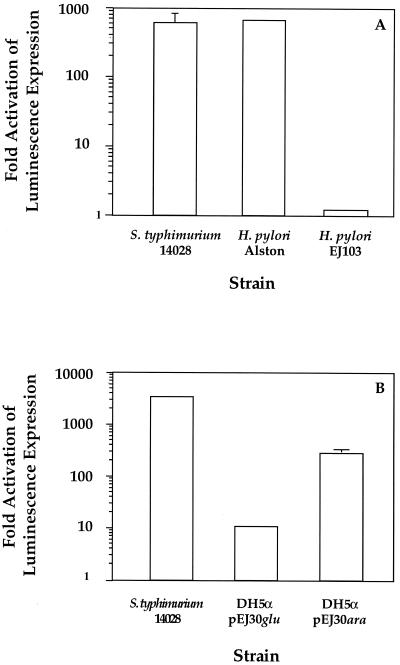FIG. 2.
H. pylori produces a luxS-dependent AI-2 activity. Cell-free supernatants were tested for the ability to induce luminescence expression in V. harveyi BB170. Ten percent cell-free supernatants or sterile media were mixed with the reporter strain in microtiter plates and incubated at 30°C on a rotary shaker. Aliquots were taken, and both cell density and light production were determined. Activity is reported as fold activation of luminescence of BB170 over the level of luminescence when sterile media were added. Assays were repeated at least two times. (A) Wild-type H. pylori and Typhimurium 14028 supernatants contain signaling substances that induce expression of luminescence in V. harveyi BB170, while the luxS deletion strain EJ103 does not. (B) H. pylori luxS expression in E. coli DH5α restores AI-2 activity. The error bars indicate standard deviations.

